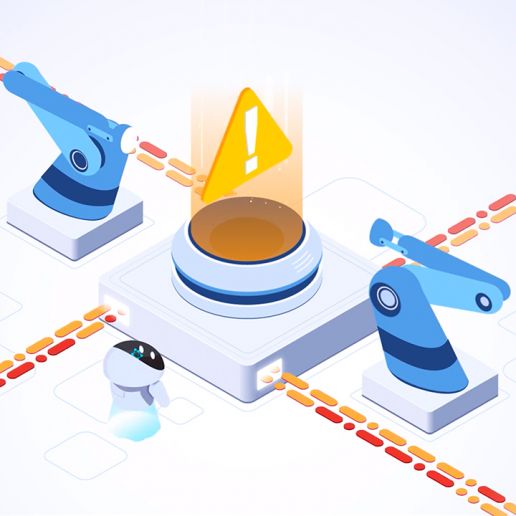

Upgrade your systems with predictive maintenance and resolve issues before they have the chance to interrupt service or availability. Predictive maintenance will improve the reliability of your program while reducing maintenance costs by up to 35%.
Our predictive maintenance software recognizes correlations, relationships and similarities between data. It can detect problems or anomalies in the service delivery chain and deliver recommendations for the teams responsible for service availability and quality.
Once a situation or anomaly is detected, immediate action can be taken to prevent availability issues or bad quality service. Our software acts in near real-time.
Our software makes it easy for you to monitor and analyze data from the systems, and to identify irregularities in the data set. Reporting modules and interactive dashboards allow for easy and effective analysis of root causes and maintenance effectiveness.
To stay ahead of the curve and ensure the most accurate insights, our predictive models are continuously being retrained on the most recent data available.
Predictive maintenance promises cost savings over preventative maintenance because tasks are performed only when warranted. While preventative maintenance relies on statistics to predict when maintenance will be required, predictive maintenance relies on the actual condition of the equipment.



Predictive maintenance is a sophisticated approach to autonomous service delivery and assurance. Predictive models based on deep learning technology prove effective as they can follow complex, non-linear relations within the data, as well as discover new schemes. Nevertheless, no single model or combination of similar models can detect anomalies effectively. Different kinds of models are often used together to obtain a higher level of predictive maintenance. Given the widespread use of AI across various applications and its black box nature, explainability in artificial intelligence (XAI) is one of the problems at the forefront of AI research. Predictive maintenance allows the generation of explanations for decisions made by the software.
Monitor key performance indicators, quality performance indices and customer satisfaction indices for the detection of violations. This functionality uses predictive maintenance based on the clustering of violations into anomalies and a root-cause analysis of these anomalies.
Often, automated procedures detect all events without identifying the correlation or cause among these alarms. Automated situation detection allows for root-cause analysis for alarms by clustering alarms into situations and allowing users to understand each situation’s classification – whether it is a root-cause alarm or simply symptoms and noise of the real cause of the alarm.
Like ASD, Automated problem detection (APD) performs root-cause analysis on trouble tickets that have been clustered into problems and problem classification, which helps identify root-causes of trouble tickets versus symptoms.
Problem
Analyzing events and incidents in telecommunications networks is a common task for telco experts. It relies on the analysis of past events, and on establishing links and correlations between these situations. This leads to the detection of ongoing irregularities that trigger events and emergency situations. This analysis requires the study of factors from a number of sources, and can be a very tedious process.
Solution
High-efficiency machine learning techniques can be employed to automate this process. By automatically analyzing which item is the actual source of a string of events, the process by which these events are detected and analyzed can be both minimized and improved drastically.
Value
With this tool, the system using ML functions will be able to identify more problems than the current experts. This is a proactive solution searching for potential new events and situations in the network, where any unsolved problem could lead to several emergency situations, and even more in the long term. This approach reduces workload for many teams and will not disrupt service provision.
This Machine Learning capability allows your operations to run more smoothly than ever before and reduce costs associated with training and hiring new employees. Knowledge accumulation allows for automated recommendations for operators regarding solutions for situations, problems and anomalies, thereby streamlining the process and ensuring a consistent quality of service.
Problem
After an anomaly, situation or problem is detected, it is essential to implement the most effective remedy that neutralizes the irregularity. Today, much of the knowledge used to find the correct remedy is collected in the form of lists of steps to be taken for any operational procedures. These tools are static and outdated, and it is tedious and time-consuming to keep them up to date.
Solution
Analysis of the decisions taken by experts allows for the creation of a Machine Learning-powered system. In its first phase, this builds on the set of the most effective solutions based on human decisions, and then analyzes this data to find persistent patterns of action and reaction. This data, along with the knowledge derived from experts, will be used to create a system which can automatically make decisions based on the anomaly at hand.
Value
This solution enables a decision-making process independent of the knowledge of a particular expert, thereby minimizing the discontinuity associated with a lack of experts. Introducing the machine-based process shortens the time required by operators to obtain skills and reduces the time and entry cost for new employees.
Tell us about your business needs. We will find the perfect product.




















